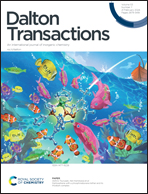Enhancing the electrochemical properties of a lithium–sulfur battery using a modified separator with a phase-inversion layer†
Abstract
The commercial application of lithium–sulfur (Li–S) batteries is limited by the inherent defects of poor conductivity of sulfur and the shuttling effect of polysulfides. To overcome these limitations, a modified layer comprising a porous network PVDF-PMMA skeleton and Ketjen black (KB) carbon nanoparticles was coated on the polyethylene (PE) separator using the phase inversion method. The PVDF-PMMA-KB (PPK) composite layer with a structure abundant in mesopores can effectively limit the shuttling effect of polysulfides via a physical barrier and adsorption. Moreover, the utilization of active substances substantially increased as the KB carbon nanoparticles could provide additional reaction sites for activating inactive polysulfides and depositing lithium sulfide. The electrochemical properties of the Li–S battery were considerably enhanced using the modified separator with a PPK layer, which was reflected in the higher rate capability and longer cycling life. The cell with a modified separator delivered a specific capacity of 723 mA h g−1 at 1 C, and the capacity retention reached 73.3% after 400 cycles with a low decay rate of 0.223% per cycle. This work provides a novel preparation method for a modified layer on the separator and promotes the large-scale application of Li–S batteries.



 Please wait while we load your content...
Please wait while we load your content...